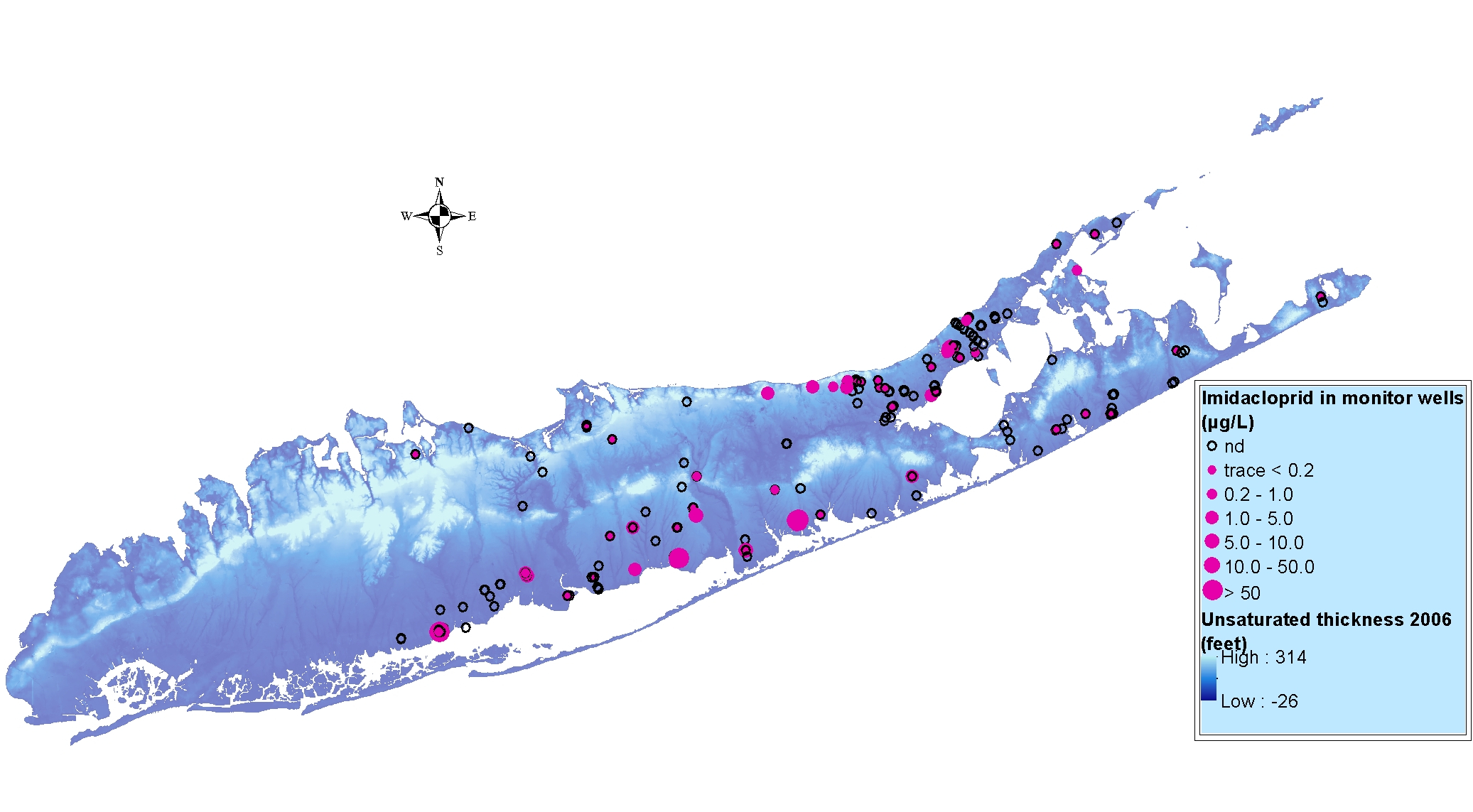Suffolk County - case study of imidacloprid insecticide
Download PDF report: pesticides-suffolk-imidacloprid-2018
MS Project by Anna L. Schatz
Groundwater in Suffolk County, New York provides drinking water for over one million people and is especially sensitive to contamination from the land surface. The area’s suburban and agricultural landscapes are among New York’s heaviest users of pesticides. Thus, Suffolk County has become the critical test case for the New York State Department of Environmental Conservation’s (NYSDEC) regulation of pesticides in groundwater. Imidacloprid (1-(6-chloro-3-pyridinylmethyl)-N-nitroimidazolidin-2- ylidenamine) is a systemic chloronicotinyl insecticide and neonicotinoid-class insect neurotoxin and is the most widely used insecticide in the world. It treats a broad variety of crops and ornamentals and is permitted for use on most of Suffolk County’s land area. Imidacloprid provides a useful case study of New York’s and Suffolk County’s groundwater protection approach. Literature contains many examples of contamination of surface waters from uses of imidacloprid in agricultural fields. The impact of most agricultural products used in greenhouses — a very important part of Suffolk County’s agriculture — has not been thoroughly considered, and represents a potential source of groundwater pollution. This study evaluates imidacloprid concentrations in about 2000 samples from pesticide-targeted monitoring wells in Suffolk County from 2001 -2010. These data were integrated with applications of root zone and vadose zone transport models, covering both field uses and concentrated uses such as greenhouses with fugitive emissions.
Data from monitor wells show that, in general, imidacloprid concentrations stay far below the State’s 50 µg/L standard for unspecified organics in drinking water. The few exceptions are outlying cases where spills or misuse may have occurred. The transport models help to account for why widespread imidacloprid use does not translate into widespread ground water contamination in Suffolk County. The deep water table and imidacloprid’s degradation rate in the near surface soil are well-documented factors. Degradation within the vadose zone, and unquantified emission pathways from greenhouses are the least understood potential influences on groundwater quality.

Unsaturated thickness and imidacloprid concentrations in Long Island, NY monitor wells 2001-2010
Explanation: Contour lines display water table depth, shading represents unsaturated thickness. Magenta circles represent the highest concentrations (at any depth or time) at the given position, larger diameter meaning higher concentration; hollow circles indicate that the concentration at that position was always below the detection limit 0.2 µg/L. Sources: Suffolk County Dept of Health Services for concentrations and well locations, unsaturated thickness data by USGS.
Last updated 2023-09-21 sp17 AT Cornell.edu.